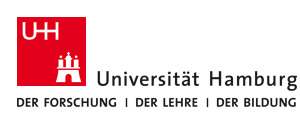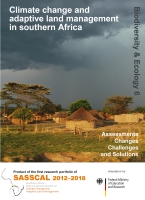
|

Department of Biology Institute of Plant Science and Microbiology |
| Division BEE > Biodiversity & Ecology > Vol.6 > Article 4.8 |
Biodiversity & Ecology
Journal of the Division Biodiversity, Evolution and Ecology of Plants , Institute for Plant Science and Microbiology, University of Hamburg.
Rangelands Research article Open Access Initial experiments on intensified use of rangelands through enhanced water and nutrient cycling
Resumo: As pastagens do Sul de África estão a degradar-se enquanto a pressão humana aumenta. Uma melhor gestão do pastoreio é claramente necessária. A gestão intensiva pode também ser aplicada a algumas pequenas áreas, como ao colher a água da chuva para ensopar o solo e apoiar o crescimento de gramínias naturais e árvores plantadas. Experiências iniciais foram realizadas em três locais, com a escavação de valas de contorno e a construção de ponding banks num destes lugares. Maquinaria de terraplanagem foi utilizada num local rural de 100 ha, enquanto que as valas de contorno foram escavadas manualmente com picareta e pá em dois pequenos locais urbanos. Diversas espécies de árvores foram plantadas abaixo das valas de controno para diferentes funções e produtos, incluindo mulching chop-and-drop, copas de protecção altas, e folhas, frutos e vagens comestíveis. Grande parte da pouca chuva vivenciada infi ltrou-se no solo. No entanto, as taxas iniciais de sobrevivência das plântulas de árvores foi baixa, sugerindo que a plantação deverá aguardar alguns anos para permitir primeiro a infi ltração de água sufi ciente. Lições úteis foram retiradas dos vários projectos de infra-estruturas testados, as quais serão aplicadas para desenvolver futuros métodos de regeneração adequados. Estes devem ser integrados com outras técnicas que abordem as causas principais da degradação, como através da gestão adequada do pastoreio e dos fogos, ao mesmo tempo que se encaixam na heterogeneidade que ocorre em diferentes escalas na paisagem.
Suggested citation: |
